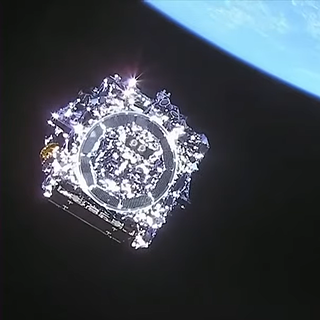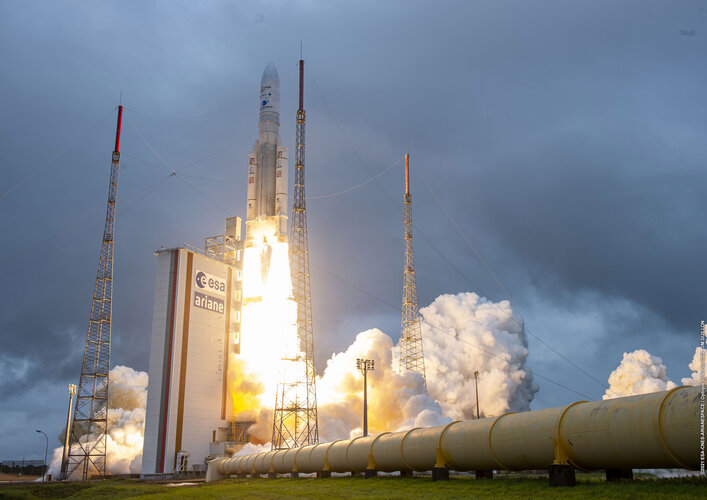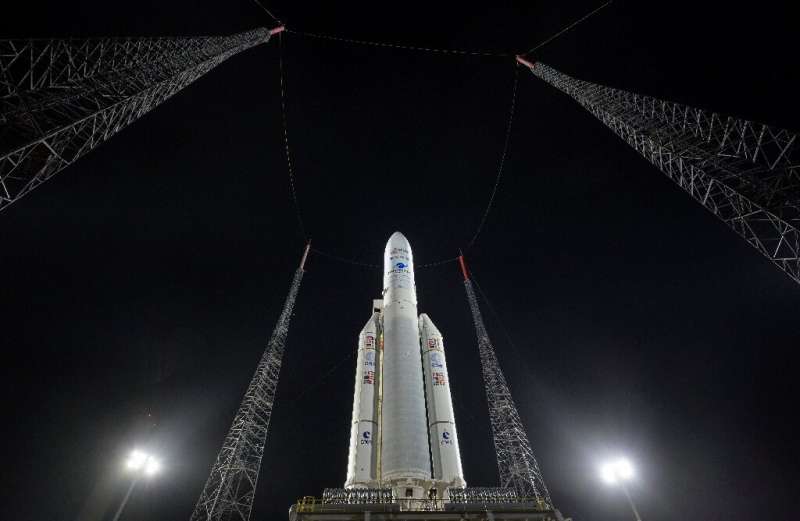
Copernical Team
Ball Aerospace-built optics and mirror system launched aboard Webb Telescope
 Ball Aerospace is celebrating the launch of NASA's James Webb Space Telescope (Webb) from French Guiana. The Colorado-based company designed and built the advanced optical technology and lightweight mirror system that will enable Webb to detect light from the first stars and galaxies.
"It is truly an honor to be such an integral part of the next great space observatory," said Dr. Makenzie
Ball Aerospace is celebrating the launch of NASA's James Webb Space Telescope (Webb) from French Guiana. The Colorado-based company designed and built the advanced optical technology and lightweight mirror system that will enable Webb to detect light from the first stars and galaxies.
"It is truly an honor to be such an integral part of the next great space observatory," said Dr. Makenzie L3Harris Completes Final US Missile Defense Agency Satellite Design Milestone
RUAG technology helped launch Webb into space
 Technology from RUAG Space protected the James Webb Space Telescope during launch and flight into space. A payload adapter placed the observatory into orbit. The launch happened on December 25.
The James Webb Space Telescope - or short "Webb" - is the largest and most powerful space telescope ever built. The successor of the Hubble space telescope will be able to peer into the oldest, most
Technology from RUAG Space protected the James Webb Space Telescope during launch and flight into space. A payload adapter placed the observatory into orbit. The launch happened on December 25.
The James Webb Space Telescope - or short "Webb" - is the largest and most powerful space telescope ever built. The successor of the Hubble space telescope will be able to peer into the oldest, most MIT engineers test an idea for a new hovering Lunar rover
 Aerospace engineers at MIT are testing a new concept for a hovering rover that levitates by harnessing the moon's natural charge.
Because they lack an atmosphere, the moon and other airless bodies such as asteroids can build up an electric field through direct exposure to the sun and surrounding plasma. On the moon, this surface charge is strong enough to levitate dust more than 1 meter ab
Aerospace engineers at MIT are testing a new concept for a hovering rover that levitates by harnessing the moon's natural charge.
Because they lack an atmosphere, the moon and other airless bodies such as asteroids can build up an electric field through direct exposure to the sun and surrounding plasma. On the moon, this surface charge is strong enough to levitate dust more than 1 meter ab James Webb telescope sets off on million-mile voyage
 The world's most powerful space telescope on Saturday blasted off into orbit, headed to an outpost 1.5 million kilometres (930,000 miles) from Earth, after several delays caused by technical hitches.
The James Webb Space Telescope, some three decades and billions of dollars in the making, left Earth enclosed in its Ariane 5 rocket from Kourou Space Centre in French Guiana.
"What an amazi
The world's most powerful space telescope on Saturday blasted off into orbit, headed to an outpost 1.5 million kilometres (930,000 miles) from Earth, after several delays caused by technical hitches.
The James Webb Space Telescope, some three decades and billions of dollars in the making, left Earth enclosed in its Ariane 5 rocket from Kourou Space Centre in French Guiana.
"What an amazi NASA's Webb Telescope Launches to See First Galaxies, Distant Worlds
 NASA’s James Webb Space Telescope launched at 7:20 a.m. EST Saturday on an Ariane 5 rocket from Europe’s Spaceport.
NASA’s James Webb Space Telescope launched at 7:20 a.m. EST Saturday on an Ariane 5 rocket from Europe’s Spaceport. Liftoff in images: Webb on Ariane 5

The James Webb Space Telescope lifted off on an Ariane 5 rocket from Europe’s Spaceport in French Guiana, at 13:20 CET on 25 December on its exciting mission to unlock the secrets of the Universe.
Webb liftoff on Ariane 5 to unlock secrets of the Universe

The James Webb Space Telescope lifted off on an Ariane 5 rocket from Europe’s Spaceport in French Guiana, at 13:20 CET on 25 December on its exciting mission to unlock the secrets of the Universe.
Liftoff replay: Webb on Ariane 5
 Video:
00:01:09
Video:
00:01:09
The James Webb Space Telescope lifted off on an Ariane 5 rocket from Europe’s Spaceport in French Guiana, at 13:20 CET on 25 December on its exciting mission to unlock the secrets of the Universe.
NASA telescope set for launch on million-mile voyage

The world's most powerful space telescope is set to blast off on Saturday to its outpost 1.5 million kilometres (930,000 miles) from Earth, after several delays caused by technical hitches.
The James Webb Space Telescope, some three decades and billions of dollars in the making, will leave Earth enclosed in its Ariane 5 rocket from Kourou Space Centre in French Guiana.
UPDATE:Space telescope launched on daring quest to behold 1st stars
The launch, scheduled in a brief window after 9:20 am (1220 GMT), will send the telescope on a month-long journey to its remote orbit.
It is expected to beam back new clues that will help scientists understand more about the origins of the Universe and Earth-like planets beyond our solar system.
